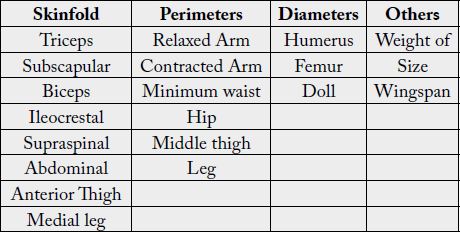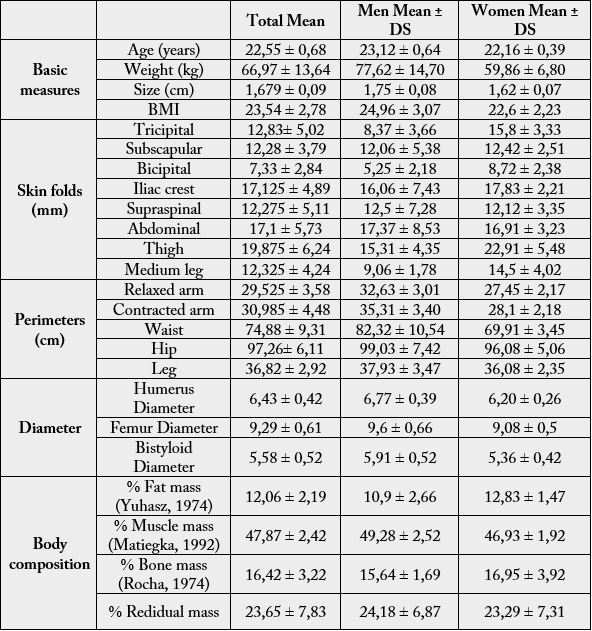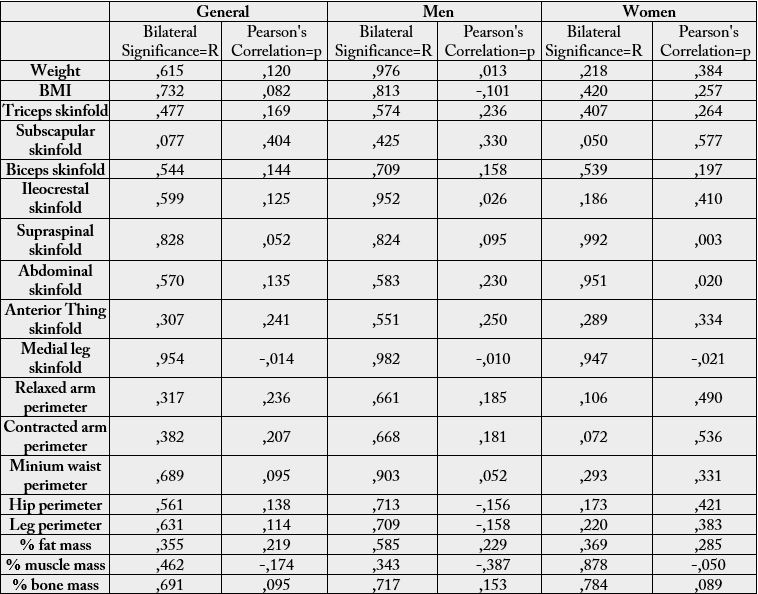Biography
Interests
María Martínez-Olcina1, Daniela Loaiza-Martínez, A.2, Manuel Vicente-Martínez3, María Hernández- García2 & Alejandro Martínez-Rodríguez4
1University of Alicante, Alicante, Spain
2Catholic University San Antonio of Murcia, Murcia, Spain
3European University Miguel de Cervante, Spain
4Department of Analytical Chemistry, Nutrition and Food Sciences, Faculty of Sciences, University of Alicante,
Alicante, Spain
*Correspondence to: Dr. Alejandro Martínez-Rodríguez, Department of Animal Science, College of Agriculture, Osun State University, Osogbo, Nigeria.
Copyright © 2019 Dr. Alejandro Martínez-Rodríguez, et al. This is an open access article distributed under the Creative Commons Attribution License, which permits unrestricted use, distribution, and reproduction in any medium, provided the original work is properly cited.
Abstract
Spanish university students showed an increment of body mass index in the last years. Healthy suggestions are based on Mediterranean diet could improve the body composition. The aim of this study is to study the relationship between adherence to the Mediterranean diet and specific variables of body composition in university students of Human Nutrition and Dietetics (HN and D).
Pilot study in which 20 HN and D degree students participated. Diet variables were studied, using PREDIMED and body composition, using anthropometry. Descriptive statistics and correlations
were made.
The PREDIMED results were very homogeneous, all presenting an optimal adherence (10,24±1,01).
In relation to body composition, the sample presented normal weight (23,54 ±2,78) and a percentage
of body fat of 10,9±2,66 in men and 12,83±1,47 in women.
No relationship was observed between dietary habits and variables of body composition in nutrition
degree university students.
Abbreviations
BMI (Body Index Mass),
cm (centimeters),
kg (kilograms)
Introduction
Nowadays, obesity is consider a pandemy; in 2016, more than 1900 million adults aged 18 or over, were
overweight, more than 650 million were obese and there were more than 340 million overweight or obese
children and adolescents (aged 5 to 19) [1]. In Spain, specifically with university students, it should be noted
that slightly less than a third of them are overweight or obese according to their BMI. This is an estimate
observed with transversal studies which are focused on the BMI in university students between 18 and 24
years old [2].
Obesity is closely related to cardiovascular risk [3] and it is also a risky factor for a lot types of diseases such as diabetes, hypertension, dyslipidemia, some types of cancer, etc. [4]. Adipose tissue has much to do with cardiovascular risk as it is directly related to most cardiovascular incidents, however subcutaneous fat has less correlation with cardiovascular problems than fat stored in visceral deposits [5]. One method of obesity detection studied and used in this study is Kinanthropometry. Anthropometry allows health personnel to measure body weight, height and different lengths, diameters, perimeters and skin folds. From these data, achieved with the application of formulas, information was obtained about the somatotype, body composition and proportionality of the human body [6].
BMI is often used to detect obesity, however it only describes the amount of mass but not the quality of the mass, so it is not considered a suitable method to estimate overweight [6]. In fact, several clinical studies proved that subjects with the same age, weight, height and therefore BMI, have totally different body compositions and somatotypes observations [7]. A relationship has been found between BMI, percentages of body fat mass and, waist and hip perimeters, considering the last one the best method to detect the risk of obesity-associated diseases, especially cardiovascular diseases [4]. In order to be able to use % fat mass and fat-free mass (based on anthropometric measurements) for the detection of cardiovascular risk, there are some studies that compare the measurements with the data obtained in DXA (in different populations) to verify their efficacy when evaluating body composition [3]. All of these measures should be used systematically in assessment by comparing data at different times to observe or detect changes in the population [8].
It should be noted that during university period there is an increase in the weight of students, both public and private universities. The increase is about 3kg and it is higher in men than in women. This weight gain has been associated with dietary intake during university years, psychological stress due to accumulation of work, exams and lack of physical activity because they do not have enough time. Many students are very sedentary, they consume alcohol regularly in the residence, campus, etc. [9]. In most of the cases when young people start college, they realize that their life depend on them, so it is their responsibility to take care of their living also their diet and grocery shopping. They must learn new culinary methods and not just to depend on fast food, which is generally less healthy and more caloric.
In relation to this, the consumption of unhealthy foods that magnify the risk of developing chronicdegenerative diseases has increased considerably. Therefore, diet and nutrition are very important to promote and maintain good health. Diet is the combination of energy and nutrients obtained from foods and beverages consumed regularly by an individual [10]. Nowadays, it is known that an adequate and healthy diet is not only the one that provides specific amounts of energy and macro and micronutrients, but it also depends on other important factors to take into account such as the number of intakes made per day and the quality of the diet, which takes into account the type of food consumed, the rations of each kind of food, etc. [11]. A diet high in saturated fats, cholesterol and trans fats is known for raising blood cholesterol levels what can negatively affect cardiovascular health.
University athletes, who follow an individually adapted diet are most likely improving their body composition and levels of anxiety, getting better results than the ones who follow a free diet [12]. This information enhances the importance of dieticians-nutritionists on young athletes in order to step up to the professional level. Dieticians-nutritionists will set up appointments to the athletes giving advices on their diets in order to improve their performance.
The most recommended pattern will be the Mediterranean diet (MD) because it is recognized as a healthpromoting dietary pattern due to its peculiar features, including the regular consumption of unsaturated fats, low glycemic index carbohydrates, fiber, vitamins and antioxidants, and moderate amount of animal-derived proteins [13]. The MD, as a healthy diet, has been reported to have numerous benefits for the organism, decreasing the risk of metabolic disorders, cardiovascular diseases, psychocological or cognitive disorders [14]. Besides a well-established anti-inflammatory activity, which is mainly due to the microbiota-derived production of short chain fatty acids that are induced by dietary fiber [15] and the high intake of both polyunsaturated fatty acids (PUFA) omega 3 and antioxidants contained in fruits, vegetables, extra-virgin olive oil [16].
The MD is characterized by high consumption of whole grains, legumes, fresh fruits, vegetables and olive oil, from moderate to high consumption of fish, moderate consumption of dairy products and low consumption of red meat products [17]. It has been proved in some studies that it is probably one of the healthiest dietary models that exist today [17,18].
Adherence to the Mediterranean diet can be quantified with various questionnaires in which scientist can observe if foods and nutrients used are helping to maintain the patient´s health on a beneficial way, being those foods and nutrients positively scored [18], or by contrary scoring negatively the unhealthy foods or habits that are not recommended for health. In this study, the questionnaire used to measure the adherence to the Mediterranean diet will be the Predimed.
As several have done before [19], the purpose was study the body composition based on four components model (fat mass, muscle mass, bone mass and residual mass), due it is one of the most useful reference values when studying body composition. Moreover, Mediterranean diet adherence was studied and also the relation with body composition variables. The hypothesis supports a high score in Mediterranean diet adherence associate a high level of nutrition and dietetics knowledge and also high muscle mass and low fat mass amount in this population.
Material and Methods
The study was carried out, during the second quarter of the academic year 2018-2019 (February-June) at
University of Alicante.
Prior the study, all subjects were informed about the purpose of the project. All of them were students of Human Nutrition and Dietetics who belong to the branch of Sports Nutrition. They complied with an informed consent, where the absence of illness was justified, and they were in optimal conditions to carry out the physical aptitude tests. All of this happened following the ethical guidelines dictated in the Helsinki Declaration of the World Medical Association for research with human beings.
In this pilot study; participated 20 students (22,55±0,68 years): 8 males (23,12±0,64 years) and 12 females
(22,16±0,39 years), who belong to the branch of Sports Nutrition of the fourth course of Human Nutrition
and Dietetics of the University of Alicante. It was not considered if they were sportsmen or not.
As for the inclusion criteria, all of the participants had to be university students of Human Nutrition from the University of Alicante, over 18 years of age that provided all the documents required by those responsible for the study, including the necessary questionnaires as well as the signature of the informed consent.
For the anthropometric assessment, the standards and measurement techniques recommended by the International
Society for the Advancement of Kinanthropometry (ISAK) [20] and the Spanish Kinanthropometry
Group (GREC) [21] were followed. An ISAK level 1 anthropometrism took the necessary measures
for the anthropometric assessment considering the intra-observer technical measurement error indicated by
ISAK (2011) for this level (10.0% for folds and 2.0% for perimeters and diameters).

Using the formulas described in the consensus on Kinanthropometry of the Spanish Group of Kinanthropometry (GREC), the body composition was calculated using the model of the three components, in addition the Body Mass Index (BMI) was also calculated. The four components of the model was: Fat mass, calculated using the Withers equation [22]; muscle mass, calculated by Lee’s proposal [23]; bone mass, calculated by Rocha’s equation [24]; and residual mass, calculated by difference.
The anthropometric materials used were the following ones: a wall measuring size meter (accuracy 1mm) to measure height; to measure weight, the Tanita BC-730F (Amsterdam, Netherlands) was used; to measure the perimeters, a Cescorf tape measure (accuracy 1mm)* was used; for the diameters a Pachymeter Cescorf (accuracy 1mm)*, for the skin folds a Cescorf Plicometer (accuracy 1mm)* was used, and moreover some Complementary material was used, such as black demographic pencil and anthropometric bench (40x50x- 30cm).
*Cescorf mark is recommended by ISAK for anthropometric study.
Information was collected from the students eating habits using the Predimed questionnaire on adherence
to the Mediterranean diet; which quantitatively assesses adherence to it, scoring healthy and non-healthy
habits positive and negative, respectively. These results in a score that classified the students into three levels:
Very low-quality diet (≤ 3 points); needing to improve the food pattern to fit the Mediterranean model (between
4 to 7 points); and optimal Mediterranean diet (≥ 8 points). This information was recorded through
a conducted interview by dietitian.
Data were analyzed using IMB SPSS Statistics Versión 25. Descriptive statistics (mean and standard deviation)
and Pearson´s correlations were performed. A significance level of p<0.05 was set.
Results
Table 2 shows the anthropometric characteristics of the 20 students measured; age, height, weight, BMI,
skin folds, body perimeters and diameters, as well as the percentages of muscle mass, fat and bone. In general,
the subjects studied had shown normal weight (23,54 ± 2,78) and low values of the skinfolds of the
upper trunk area (subscapular, supraspinal), as well as the folds of the extremities (tricipital, bicipital), especially
the bicep skinfold (7,33±2,84). It’s even more remarkable in men, where it does not reach 6 mm on
average (5.25±2.18). However, the values of the lower extremity folds (thigh and middle leg, 19,875±6,24
and 12,325±4,24, respectively) are slightly higher, especially in women, where the thigh fold stands out
(22,91±5,48). The % amount/percentage of average body fat was 12,06 ± 2,19%. Men have a higher average
BMI, close to overweight, while women have a lower BMI. Regarding to the amount/percentage % of fat,
these results are opposite, men have a lower amount/percentage % (10.9 ± 2.66) than women (12.83 ± 1.47).

Table 3 shows the results obtained using Predimed questionnaire on adherence to the Mediterranean diet. It should be noted that in the sample studied, of students from Human Nutrition and Dietetics, both men and women had good results (10.24 ± 1.01) considering that >8 is an optimal adherence. Adherence is slightly higher in women than in men (10.25 ± 1.06 as opposed to 10.22 ± 1.04) but in both cases the results are optimal.

When the Predimed Mediterranean diet adherence test result related to the variables described in table 4, there are no significant correlations. That means that there is no direct relationship between a better result in the Predimed test and therefore, a higher quality diet according to the Mediterranean diet model and body composition condition observed by means of the variables in the following table.

*Correlation exists if Sig (bilateral) <0.05
Bil = Bilateral Significance.
Pearson = Correlation of Pearson.
Discussion
Major findings in the present study reported that students of Human Nutrition and Dietetics have a good
adherence to the Mediterranean diet, which may be because of the greater knowledge they have.
In Spain, more specifically in the university population, nearly a third of students are overweight or obese [2]. The present study made it possible to describe and analyze the relationship between adherence to the Mediterranean diet and specific variables of body composition. Most of the variables studied did not show significant associations in relation to a diet according to the Mediterranean diet model.
The beginning in the University produces changes in the life for young people. Food is one of the last visible factors in students but is one of the factors that generates more changes on them [9]. During these years, an increase in weight related to dietary intake, lack of regular physical exercise, alcohol consumption, eating in residence canteens, etc., was observed. This average increase was greater in male students and was generally around 3kg.
Despite this fact, in the present study, where university students from the degree of Human Nutrition and Dietetics were evaluated, only 15% of the young people studied were overweight and none of them were obese. Although there are epidemiological studies that shown having studies in health sciences does not improve better eating behavior in most people [25,26], the meaningful score obtained in the Predimed test (10.24 ± 1.01) is higher than the value 8, from which adherence to the Mediterranean diet is defined as “optimal”. This shows that in the sample studied, eating habits were correct, with no significant differences between the two sexes.
The Mediterranean diet has proved to be a model of healthy eating and this study aims to observe if students from health sciences careers, have healthy eating habits, are positively influencing their body composition. However, it seems that it is not enough to follow a healthy diet to produce changes in body composition. In this sense, regarding other studies, physical exercise could be an essential factor to contribute in this body composition changes [27].
As an initial hypothesis, more significant associations were expected to be found to prove that a healthy diet, such as the Mediterranean diet, chosen for being in a Mediterranean country (Spain), would positively influence the body composition of the students.
It seems difficult to find correlations between a variable when there are no differences within the study population. If healthy eating, even at optimal levels, has not been sufficient for the improvement of specific parameters of body composition, it can be observed that the determining factors for this change is the totality of healthy and varied eating, in combination with regular physical exercise, as previous studies have shown [28]. Regular physical exercise is well-supported for the management of obesity-related problems. A varied and healthy diet should be adapted to the Mediterranean diet model, and physical exercise should be practice continuously. In order to accomplish this goal, professionals in both nutrition and physical activity can be called upon who can individually adapt both the diet and the training to achieve the desired effects.
Physical activity pattern could be an essential information for body composition changes in combination with specific diet programs or interventions. This limitation could affect the relation between diet and body composition outcomes. For this reason, in future studies should include this physical activity monitoring and assessment.
Conclusions
In the present study, seems that knowledge in nutrition cause a greater adherence to the Mediterranean
diet, therefore, is an important point to incorporate Nutrition in education in all education levels. Despite
this adherence is not reflected in improvements in body composition in students of Human Nutrition and
Dietetic degree. However, due to the homogeneity of the sample, more studies in the same direction as the
present pilot study would be necessary in order to support and contrast the results obtained.
Conflicts of Interest
There is no conflict of interest in this study. The data collection in this study is based only on the results of
the questions asked and the tests performed.
Bibliography

Hi!
We're here to answer your questions!
Send us a message via Whatsapp, and we'll reply the moment we're available!